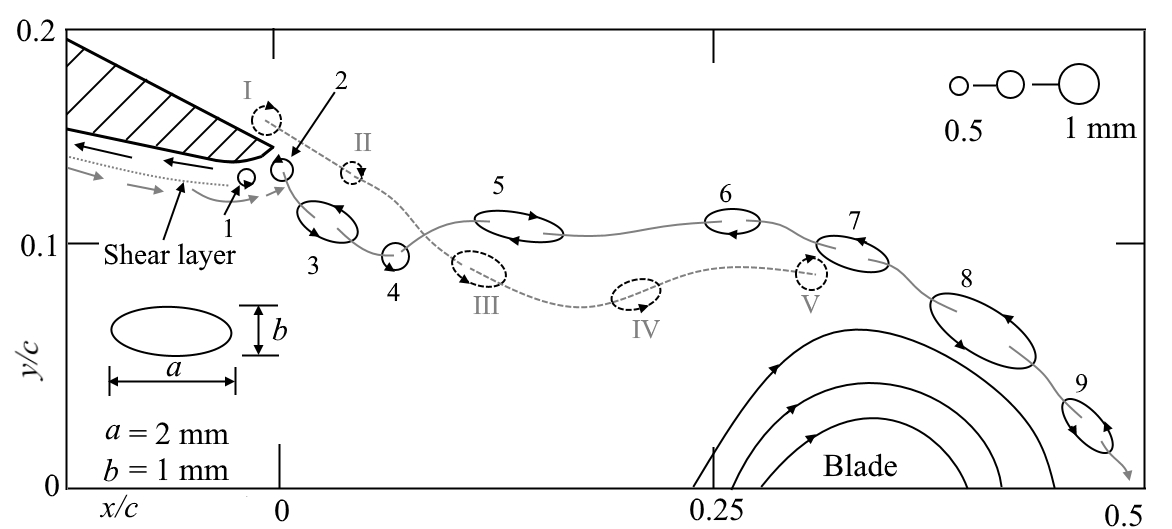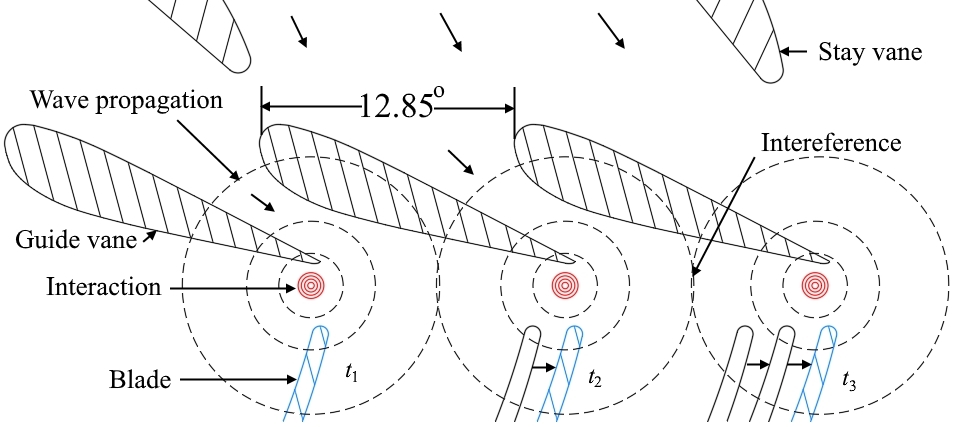francis-99-as-a-reference-study
NTNU publications
Featured publications
JULY 2018
Interaction between trailing edge wake and vortex rings in a Francis turbine at runaway condition: Compressible large eddy simulation
Physics of Fluids, 30, p. 075101.
We aimed to investigate the development of vortex rings in the vaneless space and the runner. When the turbine is operated at the runaway condition, distinct flow pattern is observed in the vaneless space. Separating vortex from the pressure and suction sides of the guide vane’s trailing edge swaps, gains strength as well as spins locally. In the runner, steep curvature of blades causes boundary layer separation, and the layer thickness reaches to critical point that leads to inception of scroll type rings. The rings grow over the time and blocks the flow, which results in channel blockade for short time.
FIGURE 1. Trajectory of the wake, vortex inception, and propagation behind a guide vane. The continuous and dashed lines show the vortex inception from suction- and pressure-sides, respectively.
● ● ●
JANUARY 2018
Investigations of Compressible Turbulent Flow in a High-Head Francis Turbine
Journal of Fluids Engineering, 140, p. 011101.
Majority of numerical studies generally assumes incompressible flow and do not model the possibility of pressure wave reflection and the acoustic effect. However, the present work revealed surprising findings. We found substantial difference between the compressible and incompressible flow results at the runner outlet and draft tube cone. At the runner outlet, sudden expansion leads to change of direction and magnitude of reflecting pressure waves. In addition, there is reflection of waves from the draft tube elbow that lead to amplification and interference with other waves. Further understanding of complex physics is needed: Pressure propagation due to convective and acoustic effect in the blade channel, reflection and direction of pressure waves after striking to the turbine walls (especially curved), and frequencies of reflecting waves as well as change in frequency due to interference.
FIGURE 1. Interaction sequence of a blade with a guide vane in the vaneless space and the wave propagation; t1, t2, and t3 are the time of corresponding interaction. The time between t1 and t2 interaction is 4.29 × 10-4 s, which is equivalent to 0.857 degree angular rotation of the runner in this turbine.


